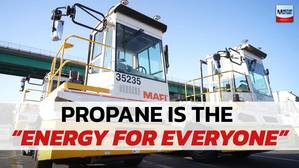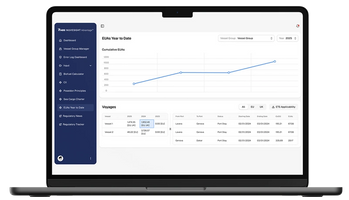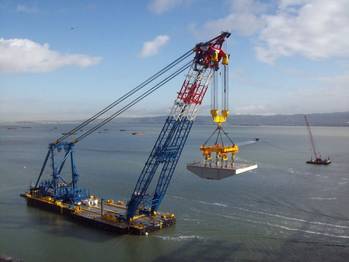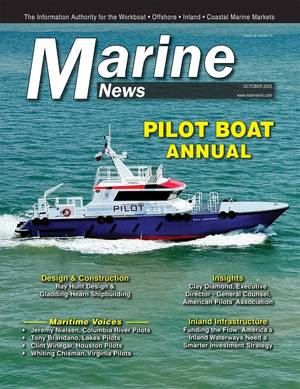Fueling the Future of Ports: Cost Savings and Resilience as Propane’s Proven Edge

Ports across the U.S. are learning a critical lesson: depending solely on government grants or an increasingly unstable electric grid is no longer enough to keep operations running smoothly. There’s a smarter, more cost-effective solution already proving its worth on the ground - propane.The exclusive webinar ‘Power & Performance at the Port: How Propane Moves Maritime Operations Forward’ - to be held October 16, 2025, at 11.00 AM ET - will bring together energy and maritime specialists…
Propane’s Economic Edge for Ports During Trade Uncertainty
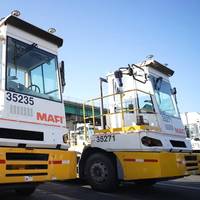
Click HERE to sign up for the October 16, 2025 webinar Power & Performance at the Port: See How Propane Moves Maritime Operations ForwardTrade has been a rollercoaster recently. Between the unpredictability of tariffs and uncertain economic outlooks, ports have faced big swings in trade volume as well as pressure to do more with less. Operational efficiency and cost control are critical, which is why propane continues to emerge as a cost-effective, dependable energy solution that…
GCMD and IAPH Forge Decarbonization Coalition Across Global Ports

The Global Centre for Maritime Decarbonisation (GCMD) and the International Association of Ports and Harbours (IAPH) have signed a two-year partnership agreement aimed at accelerating the decarbonization of the maritime sector.IAPH has a global port network comprising more than 200 port authorities and operators in over 85 countries. Together, GCMD and IAPH aim to strengthen the industry’s readiness for shipping’s fuel transition by tackling challenges and seizing opportunities in advancing alternative fuels bunkering…
Sustainable Fuel Chicken and Egg Redux. Maybe Some Ports Can Fix It.

In a recent sustainable fuel panel discussion, I once again found my self sucked into the sustainable fuel chicken and egg conundrum.I have discussed it before; shipowners will not buy ships that use a fuel for which no viable supply chain exists and fuel suppliers will not develop supply chains for which no buyers exist.In general, it is very difficult to break a chicken and egg conundrum, except through a direct directive or through, often very large, subsidies.Often direct directives leave the problem solution to the market.
Singapore Evaluates Ammonia Bunkering Solution

A consortium led by Keppel Ltd. has been appointed by the Energy Market Authority (EMA) and Maritime and Port Authority of Singapore (MPA) to conduct the next phase of the project to develop a low- or zero-carbon ammonia solution on Jurong Island, Singapore for power generation and bunkering.The appointment follows EMA and MPA’s Request for Proposal (RFP) process, where Keppel and its consortium partners, Sumitomo Corporation, and Advario, conducted a preliminary front-end engineering…
UHL MD Bonnesen to Step Down
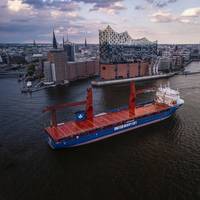
United Heavy Lift (UHL) said that Managing Director Lars Bonnesen has sold his shares in United Heavy Lift to the United Shipping Group and will step down from his role as of December 31, 2025. In a related development, Christian Monsted has also sold his UHL shares to the United Shipping Group and will continue his activities within United Marguisa Lines.This decision is closely linked to the next strategic phase of UHL, which will place a strong focus on newbuildings and further investments.
UK’s First Electric Shipping Routes Set to Slash Irish Sea Emissions
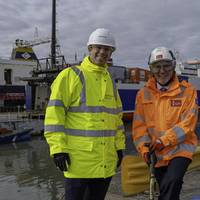
NatPower Marine and Peel Ports Group are set to commence installation of shore power at Heysham in September 2025, with the first plug live in the initial phase and expansion to four across all berths, by 2026.This will enable all Heysham routes within the Irish sea to operate with zero emissions while at berth and at sea, supporting full electric propulsion of the ferry services, as the first part of the full electrification of the Irish sea.Once all four berths at Heysham are electrified…
DNV 2050 Forecast Points to New Fuel Supply Challenges

New insights from DNV’s Maritime Forecast to 2050 indicate that the number of alternative-fuel-capable vessels in operation is set to almost double by 2028.By 2030, the alternative-fuelled fleet will be able to burn up to 50 million tonnes of oil equivalent (Mtoe) of low-greenhouse gas (GHG) fuels annually, double the estimated volume needed to meet the IMO 2030 emissions target.Yet today, actual consumption of low-GHG fuels remains at just 1 Mtoe.The widening gap between capacity…
Fujairah Ship Fuel Sales Soar
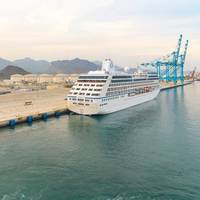
Sales of marine bunker fuel at the United Arab Emirates' port of Fujairah rebounded in July after a slump in June to their highest in three months, Fujairah Oil Industry Zone data showed.July sales totalled 640,715 cubic metres (about 635,000 metric tons), up 13.8% from June, based on FOIZ data published by S&P Global Commodity Insights.The stronger volumes were led by a boost in high-sulphur marine fuel sales, which soared to their highest since January 2024, climbing 28.4% from June to 205…
Bunker Sales Surge in Singapore
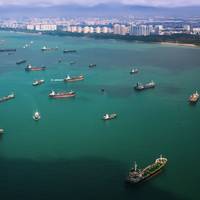
Singapore's marine bunker fuel sales in July climbed to their highest in more than one and a half years, official data showed on Thursday.Sales at the world's largest refuelling hub for ships totalled 4.92 million metric tons in July this year, up 7.0% month-on-month and 5.7% year-on-year, data from Singapore's Maritime and Port Authority (MPA) showed.More sales emerged as monthly container throughput hit its highest in the year at 3.87 million twenty-foot equivalent units (TEUs), based on MPA data. Vessel calls for bunkering rose 7.3% from June to 3,651 calls in July.
Wasaline Hits Carbon Neutrality Mark

Wasaline says it has become the first carbon-neutral shipping company in the Baltic Sea, reaching its original 2030 climate target six years ahead of schedule. The milestone comes as the Finnish-Swedish operator signed a biogas supply contract with Gasum and entered a FuelEU Maritime pooling agreement with Stena Line, enabling its Vaasa–Umeå service to run entirely on biofuels.The agreement makes the route the first international green shipping corridor in operation, an achievement supported by the DNV-led Nordic Roadmap.
Europe Ports Lag Installing Shore Power Ahead of 2030
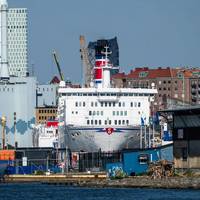
Most European ports are lagging in installing the shore-side electrical infrastructure needed for ships to switch from highly polluting marine fuel to cleaner electricity while docked, a new study showed on Tuesday.European Union environmental rules have set a 2030 deadline for maritime ports to install the infrastructure to provide what is known as onshore power supply (OPS).To assess their roll-out, Brussels-based NGO Transport & Environment (T&E) commissioned a study covering…
European Ports Slow to Install Shore Power
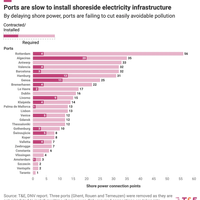
Most European ports are lagging in installing the shore-side electrical infrastructure needed for ships to switch from highly polluting marine fuel to cleaner electricity while docked, a new study showed on Tuesday.European Union environmental rules have set a 2030 deadline for maritime ports to install the infrastructure to provide what is known as onshore power supply (OPS).To assess their roll-out, Brussels-based NGO Transport & Environment (T&E) commissioned a study covering…
Hamburg Deploys AI to Boost Efficiency of Electric Ferry Fleet
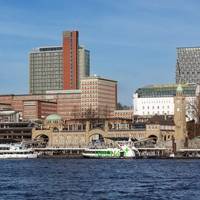
Hadag, the operator of Hamburg’s ferry services, is adopting an AI-powered platform to optimize the scheduling and operation of its electric ferry fleet.The AI system will support daily operations by tailoring charging strategies, managing energy demand, and enhancing communication with passengers via digital displays and mobile apps. With three electric ferries already delivered in 2024 and more on the way, Hadag is on track to operate a fully zero-emissions fleet.As a member of the Carbon Neutral Cities Alliance, Hamburg aims to cut emissions by 55% by 2030 and by 95% by 2050.
Port of Aberdeen Connects First Vessel to Green Shore Power Demonstrator
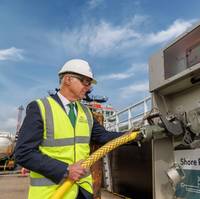
Scotland’s largest maritime decarbonization project is now live at the Port of Aberdeen, providing green shore power for vessels at eight berths in the port’s North Harbour.The concept of shore power is simple: allowing vessels to plug directly into power from the port’s renewable energy tariff, instead of running on their own fossil fuel auxiliary engines while at berth, saving on fuel and cutting CO2 emissions, pollution, and noise.For Port of Aberdeen, a Trust Port at the heart of the community with ambitions to be the UK’s first port to achieve net zero by 2040…
IMO: Global Shipping Industry Gearing Up For Net-Zero Transition
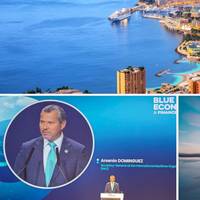
IMO Secretary-General Arsenio Dominguez emphasized the global shipping industry's need for significant investment in technology and alternative fuels to achieve a net-zero transformation and drive sector-wide change at the Blue Economy Finance Forum in Monaco, June 8.The global shipping industry is preparing for a net-zero transformation that will have a sector-wide impact on everything from supply chains and business models, to ships, ports and the maritime workforce.IMO approved new regulations for net-zero ship fuels and emissions in April, set for adoption in October.
Propane Powers WBCT’s Port Tractor Fleet to 50% Fuel Savings
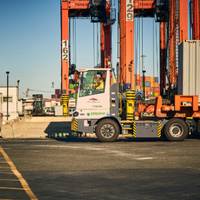
Propane is a fossil fuel, but it is a clean fuel that is more easily adaptable to port and maritime operations as compared to most other non-conventional future fuel. Jim Bunsey, Senior Manager, Business Development, Propane Education Research Council (PERC), discusses with Maritime Matters: The Marinelink Podcast, the operational value and environmental benefits of switching to propane. Specifically, takes a deep dive into the West Basin Container Terminal (WBCT) at the Port of Los Angeles and its 20+ years of experience in working with propane as a fuel for its fleet of port vehicles…
Fortescue Green Pioneer: Proving Ground for Ammonia as Maritime Fuel
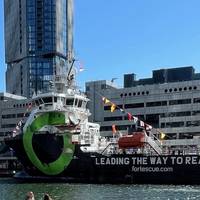
Fortescue’s Green Pioneer, billed as the world’s first ammonia dual-powered vessel, left Singapore in January of this year on voyage past the Cape of Good Hope en route initially to Southampton, both for Port State Control and to demonstrate the use of ammonia in its engines to the UK’s Maritime and Coastguard Agency (MCA), and then on to London’s Canary Wharf where is stayed through mid-April, before travelling to other north European ports.At the time when the IMO’s Marine Environment…
Port of Antwerp-Bruges Launches Europe’s First Electric Tugboat
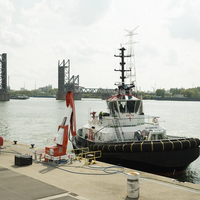
The Port of Antwerp-Bruges in Belgium has launched the Volta 1, Europe's first fully electric tugboat.The tugboat follows previous world firsts such as the Hydrotug (hydrogen-driven) and the Methatug (methanol-driven).The Volta 1 is a Reversed Stern Drive (RSD) tugboat designed on a double bow principle and equipped with a patented Twin Fin skeg for optimal stability and maneuverability. As a result, it can be used flexibly as a front and back tugboat.With its battery capacity of 2…
Watch: Port of Rotterdam Conducts Ammonia Bunkering Pilot
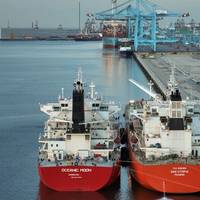
An ammonia bunkering pilot has been undertaken between two vessels at a terminal in the port of Rotterdam.The pilot, conducted on April 12, involved transferring 800 cubic meters of liquid, cold ammonia at -33 degrees Celsius between two ships. This took about 2.5 hours and was conducted alongside a new quay at the Maasvlakte 2 APM terminal.Various parties collaborated on the pilot, facilitated by the Port of Rotterdam Authority. OCI, owner and operator of the port’s ammonia terminal…
Fujairah: Bunker Fuel Sales Drop to their Lowest Since '21
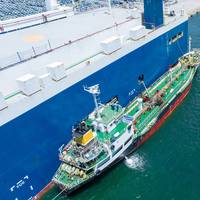
Marine fuel sales in the United Arab Emirates' Fujairah, the world's third-largest bunkering hub, fell in February to their lowest since data started being published in 2021. Volumes, excluding lubricants, totalled 554,117 cubic metres (about 549,000 metric tons) for February, showed latest Fujairah Oil Industry Zone (FOIZ) data published by S&P Global Commodity Insights.The decline reflects slower refuelling demand at key bunker ports in the year so far, against a backdrop of global shipping uncertainty.
Singapore Sets New Standard for Methanol Bunkering
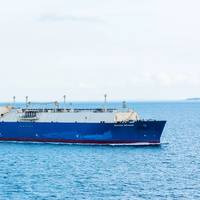
Singapore, the world’s largest bunker hub for ships, has launched a new standard for methanol bunkering, the Maritime and Port Authority of Singapore (MPA) said on Monday.The move is aimed at helping to facilitate methanol bunkering at scale as the shipping industry continues to explore alternative fuels for dirty conventional fuel.A new technical reference (TR129) on methanol bunkering has been published to provide a framework for safe and efficient use of methanol as an alternative in bunkering operations, said MPA.Singapore completed the world’s first ship-to-container methanol bunkering op
Carnival Corp Leans on Tech to Boost Vessel Efficiency, Cut Emissions
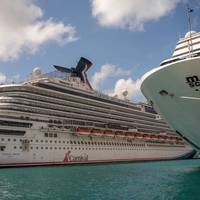
Carnival Corporation & plc (NYSE/LSE: CCL; NYSE: CUK), the world's largest cruise company, is advancing greater fuel efficiency for propulsion through hull designs and new hardware and technology, along with underwater drone inspection and cleaning trials.This work is done through complementary strategies focused on maximizing hydrodynamic performance and enhancing ongoing hull maintenance, which reduces a ship’s underwater drag. Here's a synopsis of the CCL strategy:Hull Designs: When selecting the optimal hull design…


